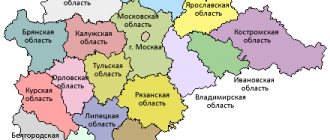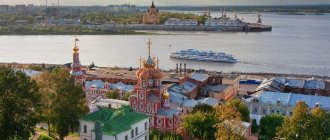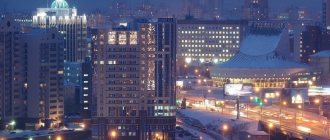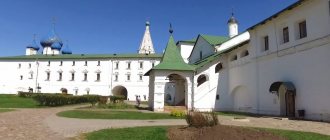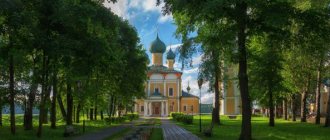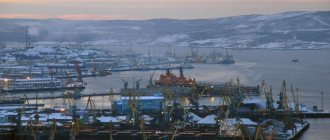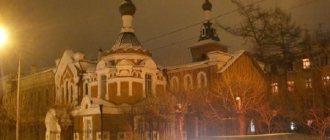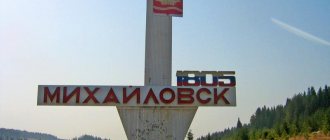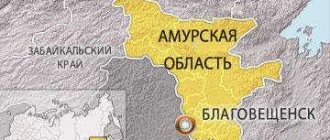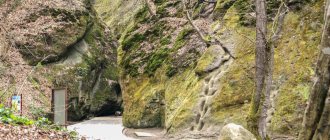The Northwestern Federal District consists of eleven constituent entities of the Russian Federation. It was formed on May 13, 2000, the administrative center is the federal city of St. Petersburg.
Map and list of subjects of the Northwestern Federal District
1 Kaliningrad region, 2 Pskov region; 3 Novgorod region, 4 St. Petersburg, 5 Leningrad region, 6 Republic of Karelia, 7 Murmansk region, 8 Vologda region, 9 Arkhangelsk region, 10 Nenets Autonomous Okrug, 11 Komi Republic.
What holiday is it today?
January 22, 2022, Saturday
Today are holidays, events: Day of Unification of Ukraine Tomorrow: Premiere of the opera “Eugene Onegin” at the Bolshoi Theater
Today is the Orthodox holiday: Martyr Polyeuctus. St. Philip, Metropolitan of Moscow and All Russia, wonderworker... Tomorrow: St. Gregory, Bishop of Nyssa. Venerable Markian the presbyter. Venerable Dometian, Bishop of Melitino. St. Paul of Komel, wonderworker, student of St. Sergius of Radonezh. Saint Theophan, the Recluse of Vyshensky...
Today is a national holiday: St. Philip's Day... Tomorrow: Gregory - Summer Guide...
Seasons
Seasons, four periods of the year (spring, summer, autumn and winter) characterized by certain average temperatures. The period during which the Sun passes through one of these sectors is called the season. Spring in the Northern Hemisphere and autumn in the Southern Hemisphere begin when the Sun passes through the initial circle of declination and its right ascension is 0° (vernal equinox). Summer in the Northern Hemisphere and winter in the Southern Hemisphere occur when the sun's right ascension is 90° (summer solstice). Autumn in the Northern Hemisphere and spring in the Southern Hemisphere begin when the sun's right ascension is 180° (autumnal equinox). The beginning of winter in the Northern Hemisphere and summer in the Southern Hemisphere is considered to be the winter solstice, when the direct ascension of the Sun is 270°... Next: Seasons. Russian folk calendar. Monthly words...
Transport
In northwestern Russia, St. Petersburg is the largest transport hub. In terms of development of the transport network, it is second only to Moscow. Large sea and river ports, Pulkovo and Pushkin airports are located here, as well as important railway and highway routes.
Public transport in St. Petersburg is represented by buses, trolleybuses, trams, taxis, the metro, and also aquabuses during the summer navigation period. In total, as of 2022, the city had 325 bus routes, 41 tram routes and 46 trolleybus routes. The Metro has been transporting passengers since November 15, 1955. There are 72 stations on five lines with a total length of 113 km.
To pay for travel on public transport there is an electronic card “Podorozhnik”, a City Card (combines “Podorozhnik”, a parking ticket and a discount card), as well as a guest card “Petersburg Card”.
Folk calendar about every day
Every day one season always replaces another and this determines a person’s way of life. In connection with this, a folk calendar was formed in which there were practically no nameless, unmarked days. Every day was special, had its own purpose. All this was determined by climate conditions and astrological phenomena.
A calendar is a system for counting periods of time. The first calendars arose a long time ago, in ancient times, because there was a need to measure time. The word calendar comes from the Latin words caleo - to proclaim and calendarium - debt book. This is due to the fact that in Ancient Rome the beginning of each month was especially proclaimed, and because it was customary to pay debts on the first day of the month. Different peoples counted time differently. Some calendars are based on the changing phases of the moon - lunar calendars; in others - the change of seasons - sunny; in others, the length of the year was coordinated with the change of seasons, and the counting of months was associated with the phases of the Moon. Such calendars are called lunisolar.
In Rus', the calendar was called a monthly calendar. Every day, the month book covered the entire year of peasant life, “describing” day by day, month after month, where each day had its own holidays or weekdays, customs and superstitions, traditions and rituals, natural signs and phenomena. The cyclical nature of the calendar is reminiscent of human life, where spring is youth, summer is heyday, autumn is the time of harvesting fruits (it’s good if there are some, otherwise you can live your life without collecting fruits), winter is the time of wisdom and peace. This cyclicality and rhythm determined the way of life of the farmer. The folk calendar was an agricultural calendar, which was reflected in the names of the months, folk signs, rituals and customs. Even the determination of the timing and duration of the seasons is associated with real climatic conditions. Hence the discrepancy between the names of the months in different areas... Next: Folk calendar...
Where to go in St. Petersburg for free
Nevsky Avenue
The most famous and picturesque street of the northern capital, the front facade of the city. It stretches for 4,500 meters from the Alexander Lavra to the Alexander Garden. The avenue was designed as the main entrance to the city from Moscow. There are many architectural monuments and places that you can simply visit, for example, Vosstaniya Square, Anichkov Bridge, the shop of the Eliseev merchants, Gostiny Dvor, the Singer House, the Kazan Cathedral. Nevsky Prospekt is a popular place with a special atmosphere that is perfect for walking. The spirit of St. Petersburg lives here.
Address: from the Admiralty to the Alexander Nevsky Lavra
New Holland Island (park)
Initially, this place was intended for testing ships for buoyancy. Now it has been transformed into a recreation area for townspeople with picnic areas, playgrounds, restaurants and cafes, and just a pleasant atmosphere. There is a theater on site.
Address: Admiralteysky Canal embankment, 2
Summer garden
The Summer Garden is the oldest garden in the city. A year after the founding of the city by Peter 1, the garden was founded. By the way, he himself personally planted the first trees here - oaks, lindens, elms. In the garden you can see sculptures depicting beauty, architecture, day, evening and night, busts of Roman emperors and fountains - which Perth considered a mandatory attribute of his garden. But after the flood of 1777, many fountains were destroyed and were never restored. To avoid incidents of vandalism, the famous park fence was installed in 1784 - it is considered the most beautiful lattice in the world.
Address: Kutuzov embankment, 2
Street musicians
One of the city's calling cards is street musicians. They create the atmosphere of a creative city right before your eyes. There are many of them here and they are all very talented. You can just listen or dance to your favorite songs. You can find them in a variety of locations: on Vosstaniya Street, between Nevsky Prospect and Ostrovsky Square, on the embankment of the Griboyedov Canal, on Malaya Sadovaya, on Palace Square and others.
Raising bridges
Since the raising of bridges attracts a huge number of spectators, they made a show out of it here, complete with music and beautiful lighting. You can admire this action both from land and from a boat, but it’s no longer free. List of drawbridges: Dvortsovy, Troitsky, Liteiny, Bolsheokhtinsky, Blagoveshchensky, A. Nevsky, Volodarsky.
Lakhta Center
The tallest building in Europe is the Lakhta Center skyscraper. Its height is 462 meters. Built quite recently, using innovative technologies, the skyscraper has already become a city landmark, and its observation deck offers a wonderful view.
Address: Vysotnaya street, 1
Kazan Cathedral
Construction of the cathedral began in 1801 thanks to Paul 1. The horseshoe-shaped colonnade of this atypical cathedral consists of 96 columns outside and 54 inside. This is a functioning cathedral, although since 1932 it has been listed as a museum of the history of religion and atheism. It is here that M. Kutuzov is buried. A scene for the film “The Diamond Arm” was also filmed here.
Address: Kazanskaya Square, 2
Fishing calendar for every day
The fishing calendar should not be taken as an absolutely indisputable truth. Fish biting is greatly influenced by a whole range of natural factors, as well as the influence on the nature of man himself. You must not forget that the fish’s bite depends and is determined not only by the calendar dates and biological cycles of their life, reflected in the calendar, but also, no less, by the state of their habitat; the bite also depends on weather conditions: air and water temperatures, cloudiness, wind direction and strength, etc... Next: Fishing calendar...
Where to go with children in St. Petersburg
Grand Layout Museum
In order to look at St. Petersburg in miniature, you need to visit the Grand Layout Museum. Here everything moves and lives its own life. Not only your children, but also you will be delighted with what they see.
Address: Tsvetochnaya street, 16L
Park of the 300th anniversary of St. Petersburg
The park has access to the Gulf of Finland and a sandy beach. Many types of trees were donated to the park by other countries. The main attraction of the park is a large 22 meter lighthouse. This park is one of the most favorite family vacation spots in St. Petersburg. Among the children's entertainment, there are only trampoline playgrounds, but despite this, the sun, beach and nature of the park are enough for a wonderful time with children. In addition, on its territory there is an amusement park Divo-Ostrov, and a ten-minute walk away is the huge Piterland water park.
Address: Primorsky Avenue, 74D
Leningrad Zoo
The historical name of this zoo was preserved in honor of the memory that during the siege the staff were able to save the lives of the animals that lived here. It was founded in 1865 on the site of a private zoo. Now there are about 2.5 thousand animals and birds, 18 species of which are listed in the Red Book.
Address: Alexandrovsky Park, 1
Zoo museum
It is one of the three largest such establishments in the world. The collection was founded back in 1714 by Peter the Great. The world-famous Birch Mammoth is located here. The huge variety of exhibits of representatives of the deep sea, birds, dinosaurs, and marsupials will not leave anyone indifferent.
Address: Universitetskaya embankment, 1-3
Museum of Magic
A fabulous place with a lot of surprises. Here you can interact with magicians, interactive miracles, hat tricks and even Harry Potter's broom. You will see exhibits borrowed from magicians and learn how it all works. There is a relaxation area with a cafe and a place for a magical photo shoot.
Address: Nevsky Prospekt, 74-76G
Orthodox calendar about every day
Orthodox calendar: Orthodox, Church and Christian holidays.
The church year is an alternation of weekdays and holidays. On weekdays, a person is called to work “by the sweat of his brow to earn his bread.” Holidays are given in order to feel liberation, to rise above the bustle and routine of the world, to feel involved in the highest of worlds, “where there are no illnesses, sorrows and sighs, but endless life.” Since ancient times, holiday cycles have been associated with the seasons. The pagans associated them with the worship of the forces of nature, the cult of which in the Old Testament was replaced by gratitude to the Creator for the universe. And although the connection between holidays and the seasons has not completely lost its power, since God is present in everything, in the plant and animal world, in human works, it nevertheless faded into the background, giving way to a spiritual foundation built on the Sacred Scriptures. The history of Orthodox holidays dates back to the times of the Old Testament. Each of the Orthodox holidays is dedicated to the remembrance of the most important events in the life of Jesus Christ and the Mother of God, as well as the memory of saints... Next: Orthodox calendar...
How to get to St. Petersburg from Moscow
You can get to St. Petersburg from Moscow in any way convenient for you - by car, bus, train or plane.
Flights depart daily from Vnukovo and Domodedovo airports to St. Petersburg. The flight takes about one and a half hours. This is the fastest way.
You can get to the northern capital using the services of the Sapsan high-speed train. It will take you from Moscow to St. Petersburg in 4 hours.
You can take advantage of the railway connection between the cities and set off on the Red Arrow and Lastochka trains from Leningradsky Station in Moscow. Travel time is approximately 7-8 hours.
There is another way to get to St. Petersburg - by bus. The method is not the fastest or most comfortable, but it exists. The time you will spend on the road is about 11 hours.
If you choose a car as your mode of transportation, you will also spend about 11 hours on the road. You can try to avoid traffic jams by driving along the M11 toll highway.
Russian folk calendar for every day
The word “sign” comes from the word “notice”, i.e. observe. As a result of observing what happens around a person every day, he accumulates life experience. This knowledge was passed down from generation to generation, carefully preserved and people trusted it as a sacred book. Many signs have come to us from the depths of centuries without losing their knowledge. Each of us is free to choose: to dismiss all this as an absurd superstition or to take a closer look at the signs and take the centuries-old experience of generations more seriously. Most of us, when taking exams, ask them to scold them, boasting about some kind of good fortune or luck, spit so as not to jinx them or knock on wood, take a detour if a black cat crossed the road, are afraid of the number 13 and much more. And who among us does not have lucky things, numbers? Who has never resorted to the help of fate at least once in their life, who has not believed in secrets? It’s as if everything connected with signs is hidden somewhere deep in our subconscious. Often we remember them mechanically, unconsciously, or just as a joke. But, undoubtedly, the signs contain a lot of accurate knowledge and practical wisdom of our ancestors. They cover all the characteristic, often difficult to perceive, natural phenomena. Signs have preserved a lot of what was in old folk holidays and customs; they help predict the weather, grow crops... Next: Folk signs...
Holiday calendar, dates and events of the year
All state and professional holidays in Russia, including significant World and International holidays, and other equally interesting holidays and events about every day.
The holiday has always kept pace with the history of mankind. Social time can be divided into three types: everyday life (weekdays), weekends and holidays. Everyday life is a series of practices repeated day after day and every day (work). Weekends are regular breaks from the rush of everyday life. It is believed that on weekends a person should restore his strength after working days. Day off, non-working day. A holiday is a day of celebration established in honor or in memory of someone or something. A day or series of days celebrated by the church in memory of a religious event or saint... Next: Calendar...
General information about St. Petersburg
The city was founded on May 27, 1703.
Former names: St. Petersburg (until 1914), Petrograd (until 1924), Leningrad (until 1991)
Area – 1439 m².
It ranks second in population after Moscow. The population is more than 5 million people.
St. Petersburg is considered the cultural capital of Russia.
City Day May 27.
Climate: fairly humid, temperate maritime with moderately cold winters and moderately warm summers.
Prayer book, Orthodox prayers for every day
Prayer is the most powerful means for healing all illnesses - both physical and mental. Prayers can be laudatory or grateful, petitionary and repentant. If we have offended God, sinned, we must ask Him for forgiveness, that is, repent. Such prayers are called repentant prayers. If everything is fine with us, if we and our loved ones are healthy and prosperous, if we have a place to live, something to wear, something to eat, we must glorify and thank God for this. Such prayers are called praise or thanksgiving. If some misfortune, illness, trouble or need happens, you need to ask God for help. Such prayers are called petitionary... Next: Orthodox prayers...
Zodiac, astrological, eastern calendar. Zodiac signs
In ancient times, to establish the calendar, priests used knowledge of the positions of all the planets. Before the reform of Peter 1, the New Year was celebrated on the Day of the Autumn Equinox. On this day, according to ancient legend, the most peaceful treaty was concluded between the Great Race (ancient Slavs) and the Great Dragon (ancient Chinese) and it was approximately 7518 years ago... For the ancient Slavs, the calendar month corresponded to the lunar cycle from new moon to new moon, taking into account such Thus, the relationship of the entire annual cycle with astronomical and natural phenomena. There was no coherent calendar system. The main natural phenomena are still considered to this day to be the days of the solar equinox and solstice - the Slavic holidays Maslenitsa, Kupala, Ovsen and Kolyada. But during the time of Peter 1, all ancient Slavic calendars were abolished and a new Western European calendar from the Nativity of Christ (Julian calendar) was introduced, while the beginning of the calendar was moved to January 1. The Julian calendar (old style) did not take leap days into account and accumulated one extra day every 128 years. After the October Revolution in 1918, the Gregorian calendar (new style) was introduced in Russia, according to which an amendment of 13 days was introduced. The calendar of the ancient Slavs was based on two planets: the Sun and the Moon. And now they don’t use anything at all. The calendar has become static. There is no such thing as the calendar, it turns out, resting on some planet. Nobody even knows about it. There are just some standard numbers, there are months and holidays. The calendar is based on the Sun and Moon. Why is this so? Because these two luminaries influence the Earth. The Earth revolves around the Sun, and the Moon revolves around the Earth. And these two luminaries create the atmosphere on the planet. From here the calendar is built... Next: Astrological calendar...
Sights of St. Petersburg
Not a single guidebook will cover all the most interesting and curious places in St. Petersburg with its content. Therefore, we will introduce you to the main attractions of the city on the Neva.
The most striking sights of St. Petersburg
Peterhof
Peterhof is a monument of world architecture, the greatest museum reserve, the capital of fountains, palaces and parks. The former country imperial residence, founded by Peter the Great for more than 300 years, continues to amaze with the amazing harmony of nature and the creation of human hands. The Great Peterhof Palace is one of the most beautiful palaces in Europe. It is also called the Russian Versailles. It is one of the largest monuments of the 18th century and is included in the UNESCO World Heritage List. The fountain complex lasted for more than a century, during which time it acquired four cascades and 173 fountains. The Grand Cascade is one of the largest fountain ensembles in the world, including more than 60 fountains, more than 250 statues and reliefs. The pool is designed like a large lake along the shores of which pagan deities sit. The parapets of the stairs are decorated with gilded statues and vases. Peterhof fountains and cascades amaze with their magnificence - they were created by the best engineers and sculptors of that time. The reserve is famous for its parks, walking through the territory of which you get real pleasure.
Address: Razvodnaya street, 2
Saint Isaac's Cathedral
St. Isaac's Cathedral is the main cathedral of Russia. The temple took an unusually long time to build. The first wooden church appeared here at the beginning of the 18th century. They rebuilt and changed its appearance four times. In our time we see an outstanding example of late classicism. Its height is 101 meters and its internal area is more than 4000 m². 4,000 kilograms of gold, 1,000 tons of bronze, 16 tons of malachite, lapis lazuli, black slate, and multi-colored marble were used to decorate the main temple of the empire. St. Isaac's Cathedral is considered a treasury of colored stone. The interior of the cathedral is filled with dozens of mosaic paintings, monumental paintings, sculptures and stained glass windows. Since 1928, the cathedral has been given the status of a museum, but services are also sometimes held here. Local residents simply call him Isaac.
Address: Isaac's Square, 4
Savior on Spilled Blood
Church of the Resurrection of Christ or as it is popularly called – Savior on Spilled Blood. The building is very similar to St. Basil's Cathedral, which is located on Red Square in Moscow. The Savior on Spilled Blood was built at the beginning of the 20th century according to the design of the architect A. A. Parland in the style of the times of the Moscow Tsars. Alexander 3 ordered to rebuild this temple on the site of the death of his father Alexander 2. The temple contains the part of the pavement on which the king was mortally wounded. During the Second World War there was a morgue here; corpses were brought here from all over Leningrad. And in 1961, an unexploded German landmine weighing 150 kg was found in one of the domes of the temple; it pierced the vault and got stuck in the ceilings. After restoration in the mid-90s, the temple became a museum of mosaic monumental art. Sometimes ceremonial services are held here.
Address: Griboyedov Canal Embankment, 2B, lit. A
Palace ensemble
The palace ensemble consists of the Imperial Winter Palace, the building of the Guards Corps, the General Staff building and the Alexander Column. The Winter Palace was built specifically for Empress Elizabeth Petrovna according to the design of the famous architect B. F. Rastrelli. It is located on Palace Square, and next to it is the building of the General, or as it used to be called, the Main Headquarters of the Russian Army. In the 1760s and until the 1917 revolution, the Winter Palace remained the main imperial residence. During this time, he changed his appearance four times. Today the Winter Palace is part of the State Hermitage Museum. In the center of the square is the Alexander Column, dedicated to the victory of Russian troops over Napoleon. The height of the column is almost 48 meters, and at the very top there is a figure of an angel with a cross.
Address: Palace Square, 2
Palace Bridge
One of the symbols of St. Petersburg is the Palace Bridge with spread wings. It is rightly called the most romantic. It is staged at night and tens of thousands of tourists come to see this spectacle. The night illumination of the bridge fascinates with its beauty. The gigantic structure consists of five spans and is stunning in its size. The total length is 260 meters, the width is almost 28 meters. A unique adjustable mechanism lifts 700-ton spans up over the Neva. The night panorama of the raised bridge against the backdrop of the bell tower of the Peter and Paul Fortress is the hallmark of St. Petersburg.
Address: Great Neva embankment (between Palace Square and the Kunstkamera Museum)
Peter-Pavel's Fortress
The Peter and Paul Fortress and the Cathedral are located almost in the very heart of the city on Hare Island. Peter and Paul Fortress began to be built by Peter 1 to protect the city. The place where troops, riflemen and cannons were located for defense was strategically ideally chosen. On its territory a temple was built in the name of the holy apostles Peter and Paul. That is why the fortress was later called Peter and Paul Fortress. After the death of Peter 1, the Peter and Paul Cathedral in 1725 became the tomb of the House of Romanov. All Russian emperors are buried here. By decision of Queen Elizabeth, from 1870 to this day, a midday shot is fired from a cannon to notify the exact time. And from the Nevsky Panorama you will have a beautiful view of the central part of the city.
Address: Hare Island
Cruiser Aurora
The legendary cruiser Aurora is symbolically the number one ship of the Russian Navy. Since the beginning of the twentieth century, the cruiser entered service with ships of the Russian fleet. Aurora received her baptism of fire in the Russian-Japanese War of 1905. She also took part in the fighting in the Baltic Sea during the First World War. And of course, during the Great Patriotic War, the cruiser Aurora defended Leningrad. Now there is a branch of the Naval Museum where original documents, photographs and ship objects are collected that tell about the history of the cruiser and its participation in the fate of Russia. Aurora is the main symbol of the Bolshevik revolution of 1917.
Address: Petrogradskaya embankment, 2
Kronstadt
One of the bases of the Russian Navy is located in the city of Kronstadt. The port city is located on an island in the Gulf of Finland. Construction of the fortified city began in 1703 and immediately after its construction, the Kronstadt fortress became a reliable shield of Russia and St. Petersburg. The city of Kronstadt is very small - only 50,000 people. There's a lot to see here. The island has many attractions and since 1996 the fortified city of Kronstadt has been open to tourists. A unique complex of forts was built near the island to protect St. Petersburg. This is a chain of fortresses on artificially built islands. At the moment, the forts have lost their military significance, but remain the most powerful fortification complex in the Baltic. Warships are the calling card of the city of Kronstadt. This is the cradle of the Baltic Fleet.
Address: Kotlin Island
Naval Cathedral
The Naval Cathedral of St. Nicholas the Wonderworker is considered the main temple of the Russian Navy. The grandiose building is a unique monument to the heroism and courage of Russian sailors. In the temple there are memorial plaques with the names of those who gave their lives defending the fatherland at sea. The history of the Naval Cathedral in Kronstadt is tragic. The majestic temple took 10 years to build and was illuminated in 1913. But after 15 years it was ruined and closed. And for more than 70 years, its premises were used for a variety of needs. And only in 2013, the main and most iconic sea temple in Russia was again opened to parishioners. The island has many attractions and since 1996 the fortified city of Kronstadt has been open to tourists.
Address: Yakornaya Square, 5A
Dream books online, interpretation of dreams
A dream book is nothing more than an interpreter of dreams and dreams, a translator of dreams. Since ancient times, people have been using dream books; dreams have always been given great importance, and people have often noticed the prophetic properties of some dreams. The dream book can become your faithful assistant every day and throughout your life, thanks to the dream interpreter you can always make the right decisions, the dream book will help you resist temptations in time, and will warn you against wrong steps and frivolous actions. Further…
